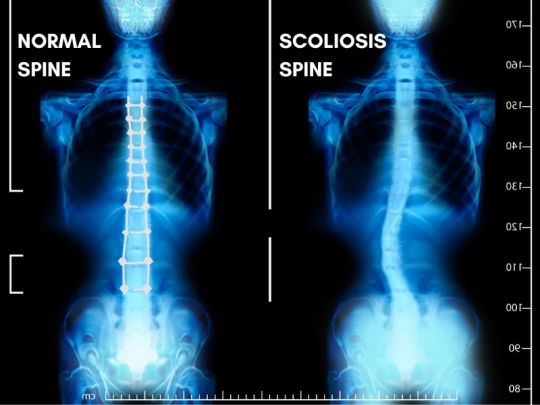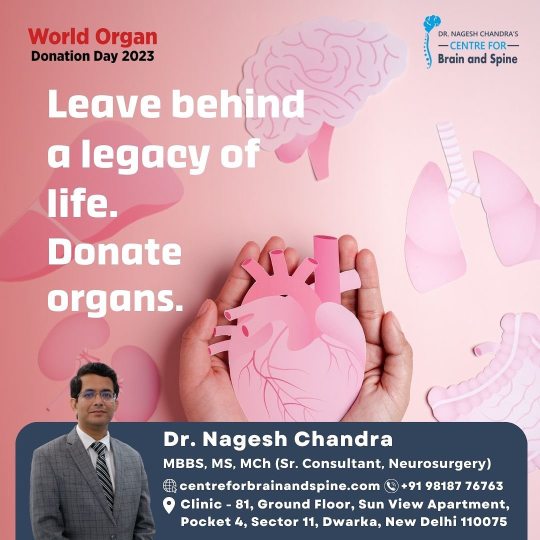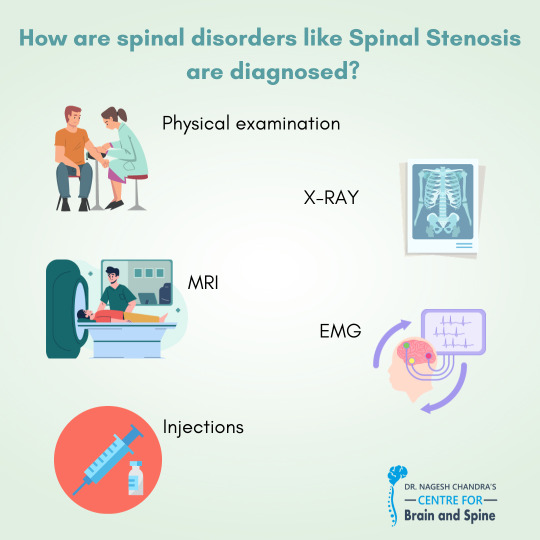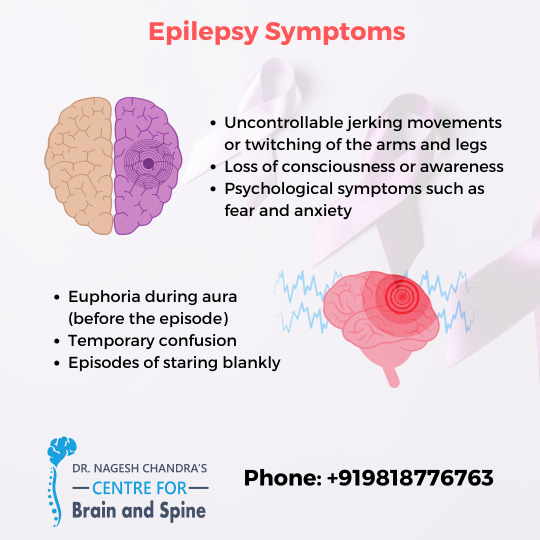Text
Back and Spine Problems
Back and spine problems are among the most common problems people face. These problems can significantly affect daily functioning and deteriorating well-being.

Some Common Back and Spine Problems
Back and Spine Problems generally occur due to previous injuries, excessive strain on muscles, degenerative tissues, chronic arthritis or heavy lifting that leads to pain and restricted movements.
Some common back and spine problems faced by people are as follows:
Herniated Discs
There are cushion- materials between the vertebrae called discs. These discs support the spine and allow the vertebrae to give flexibility to joints, so they move easily. When there is a rupture or bulging of these discs, it is known as herniated discs. This vertebrae disc problem causes excessive spine, neck and back pain.
The common causes of herniated discs are as follows.
Obesity
Heavy Lifting
Ageing
Repetitive motions
Degenerative Disc Disease
The spinal discs are an essential component of the nervous system. They act as shock absorbers, allow movement, and help to bend and twist with comfort. Degenerative Disc is a condition when the spinal discs wear down, causing the bones to rub together, which causes problems.
Some common causes of degenerative disc disease are as follows.
Working in a physically demanding job
Ageing, particularly after the age of 40
Smoking
Acute injuries
Scoliosis
Scoliosis is a condition that leads to sideways curvature of the spine. Most of the symptoms are mild, but severe symptoms can cause uneven posture, cervical pain, and chronic pain. If you are suffering from extreme pain, surgery and bracing can be the possible treatments. In adolescents, it affects the thoracic region, and in adults, the lower lumbar spine region is most affected.
Some common causes of scoliosis are as follows.
Tumour in Spine
Genetic Change
Excessive use of muscles that causes strain
Spinal Stenosis
When the space within the spinal cord becomes narrow, it causes spine stenosis. This narrowing space causes irritation in the spinal cord and the nerves surrounding it. The common spinal stenosis symptoms include acute neck pain and tingling in your arms and legs, and stiffness of the backbone.
Spinal Stenosis can be acquired, which develops after birth or congenital, that is, from birth.
Some common causes of spinal stenosis are
Genetics
Bone outgrowth
Spinal cysts
Thick ligaments
Kyphosis and Lordosis
Kyphosis and Lordosis are the most common problems that affect the back and spine.
Kyphosis is a condition when there is excessive outgrowth of the spinal curvature that causes hunched backs.
When the spinal curvature shifts inwards excessively, it causes lordosis. Both these problems affect the upper back and spine, causing chronic pain and sometimes increasing the inability to move.
Some common causes of Kyphosis and Lordosis are:
Poor posture
Osteoporosis
Past trauma or injuries
Excessive weight
Prevention of Back and Spine Problems
Some common ways to prevent your back and spine problems are as follows.
Maintaining a proper posture can help to prevent your back and spine problems. If you are standing, sitting or performing heavy lifting exercises, maintaining a good posture is important so that your spinal muscles are aligned.
It is important to manage your weight so as to cause less strain on your spine. Including a balanced diet, proper sleeping schedule and proper exercises can help to manage your weight.
For people who have to sit for prolonged hours for their job, they must take breaks to stand, stretch or simply walk at regular intervals to prevent excessive pressure on their back and stiffness.
It is important to incorporate strengthening exercises that make your spinal muscles strong and enhance flexibility.
If you are suffering from back and spine problems, you are advised to visit a neurosurgeon in Dwarka. At the Center of Brain and Spine, we have the best neurosurgeons in Delhi who offer personalised treatment for your specific problems.
#spine doctor in delhi#spine surgery in delhi#neurosurgery in delhi#neuro & spine treatment in dwarka#neurosurgeon in delhi
0 notes
Text

Expert brain & spine treatment in Delhi. Trust our top neurosurgeons in Dwarka for advanced neuro & spine care. Discover compassionate and cutting-edge treatment solutions tailored to your needs. Visit us at the Centre for Brain and Spine for a consultation today!
0 notes
Text
Seeking scoliosis treatment in Delhi? The Centre for Brain and Spine in Dwarka offers expert care from top neurosurgeons. Our leading neurology hospital provides advanced scoliosis treatment and comprehensive support. Trust our specialized team for effective solutions. Book a consultation today!
0 notes
Text

The Center for Brain and Spine offer the best treatment. We specialise in neurosurgery and have a team of neurosurgeons who use advanced robotic systems for spine surgeries with precision.
For those in need of the right care in neurosurgery in Delhi, the centre ensures professionalism in diagnosing, treating and managing the neurological diseases and disorders of the spine. Contact us today for consultation and treatment.
#best neurosurgeon in Delhi#Best spine doctor in delhi#cost of robotic spine surgery#cost of spine surgery#neurosurgeon in delhi#neurosurgeon in dwarka#neurosurgeon near me#robotic spine surgery#spine specialist in dwarka#spine surgeon neaer me#spine surgery
0 notes
Text
Dr Nagesh Chandra is one of the best neurosurgery specialist in Delhi, provides neuro & spine treatment at Centre for Brain and Spine, Dwarka.
#spine doctor in delhi#spine surgery in delhi#scoliosis treatment in delhi#neurosurgeon in delhi#best neurosurgery specialist in delh#neuro & spine treatment in dwarka#neurology specialist in dwarka#neurology specialist in delhi#neurology hospital in delhi#neurosurgery in delhi
0 notes
Text

Dr. Nagesh Chandra’s Centre for Brain and Spine – Your partner in the journey towards better health.
#neurosurgeon in delhi#best neurosurgery specialist in delhi#neuro & spine treatment in dwarka#neurology specialist in dwarka#neurology specialist in delhi#neurology hospital in delhi#neurosurgery in delhi
0 notes
Text

We provide comprehensive care for all types of spinal deformities including scoliosis. Our goal is to correct the deformity, alleviate pain and improve the quality of life of our patients.
0 notes
Text
Gliomas, a form of brain tumor originating in the glial cells, pose a significant threat to human health, accounting for approximately 33% of all brain tumors. In this blog post, Dr. Nagesh, a renowned neurology specialist in Delhi, shares valuable insights into gliomas, covering their types, symptoms, diagnosis, and treatment.
These tumors stem from abnormal growth in the glial cells, which play a crucial role in supporting the nervous system's structural integrity and providing essential support to neurons. Gliomas, essentially parasitic tumors within the brain, demand careful consideration.
The World Health Organization (WHO) classifies gliomas into four grades, ranging from Grade I to Grade IV, based on their aggressiveness and malignancy.
Grade I gliomas, known as low-grade gliomas, exhibit the least aggressiveness, growing slowly and posing a lower risk of invading nearby tissues.
As malignancy progresses, Grade II gliomas display a moderate level of aggressiveness, posing an increased threat to the patient. However, the real danger lies in Grades III and IV—high-grade gliomas. Glioblastoma multiforme (GBM), a Grade IV glioma, stands out as the most cancerous and perilous form, notorious for its rapid progression and grim prognosis.
Know more by following the link!
#centre for brain and spine#dr nagesh chandra#neurosurgeon in dwarka#best neurosurgery specialist in delhi#neurology specialist in delhi#neuro & spine treatment in dwarka#neurosurgeon in delhi#neurology hospital in dwarka#neurosurgery in delhi
0 notes
Text

#centre for brain and spine#dr nagesh chandra#best neurosurgery specialist in delhi#neurosurgeon in delhi#neurosurgeon in dwarka#neurology specialist in delhi
0 notes
Text
A herniated disc, also known as a slipped or ruptured disc, is a spinal condition causing intense pain. In this detailed article, a leading spine specialist in Delhi explains everything about herniated discs, including their causes, symptoms, and treatment.
What is a Herniated Disc?
A herniated disc occurs when the soft, gel-like center of an intervertebral disc protrudes through a tear in its tough outer layer. These discs serve as shock absorbers between the vertebrae in the spine.
Discs contribute to flexibility and cushioning during movement. When a disc herniates, it can apply pressure on nearby nerves, resulting in the following symptoms.
#neurosurgeon in dwarka#neurosurgeon in delhi#centre for brain and spine#best neurosurgery specialist in delhi#dr nagesh chandra#neurosurgery in delhi#neuro & spine treatment in dwarka#neurology hospital in dwarka#neurology specialist in delhi#dr. nagesh chandra
0 notes
Text

#centre for brain and spine#dr nagesh chandra#neurosurgeon in delhi#neurology hospital in dwarka#neuro & spine treatment in dwarka#neurology specialist in delhi#neurosurgery in delhi#neurosurgeon in dwarka#best neurosurgery specialist in delhi
0 notes
Text
0 notes
Text
Common Neurological Disorders among Indians |Top Neurosurgeon in Delhi
Neurosurgical disorders emerged as formidable adversaries, particularly in India where their prevalence is on the rise. The repercussions of these disorders extend far beyond the individual, affecting families, communities, and placing an enormous burden on the healthcare system. In this exposé, One of the top neurosurgeons in Delhi explains six prominent neurosurgical disorders, laying bare their potential causes, insidious symptoms, the harsh reality faced by patients, and, crucially, the avenues available for effective treatment.
Common Neurological Disorders
Brain Tumors:
Causes: The genesis of brain tumors is multifactorial, ranging from genetic predispositions to environmental factors.
Symptoms: Persistent headaches, seizures, cognitive decline, and motor impairments often herald the presence of a brain tumor.
Reality Check: Patients grapple with the labyrinthine healthcare system, compounded by the emotional toll of a potentially life-threatening diagnosis.
Treatment: Surgical resection, chemotherapy, and radiation therapy form the triad of treatment modalities, with personalized approaches gaining prominence.
Stroke:
Causes: Atherosclerosis, hypertension, and thrombotic events contribute to the majority of strokes.
Symptoms: Sudden numbness, confusion, and difficulty in speech or vision are telltale signs.
Reality Check: Stroke survivors face the uphill battle of rehabilitation, grappling with physical and cognitive impairments.
Treatment: Timely interventions, including thrombolytic therapy and endovascular procedures, are pivotal for salvaging brain function.
Spinal Cord Injuries:
Causes: Trauma, accidents, and degenerative conditions can precipitate spinal cord injuries.
Symptoms: Paralysis, loss of sensation, and impaired bowel or bladder control are common outcomes.
Reality Check: Patients confront the stark reality of altered lifestyles and dependence on assistive devices.
Treatment: Surgical interventions, rehabilitation programs, and assistive technologies play pivotal roles in fostering recovery.
Epilepsy:
Causes: Genetic factors, brain injuries, and infections contribute to epilepsy.
Symptoms: Recurrent seizures, altered consciousness, and unusual sensations characterize epilepsy.
Reality Check: Stigmatization and societal misconceptions exacerbate the challenges faced by epilepsy patients.
Treatment: Antiepileptic medications, surgical procedures, and lifestyle modifications are key components of epilepsy management.
Hydrocephalus:
Causes: Congenital anomalies, infections, and tumors can disrupt cerebrospinal fluid dynamics, leading to hydrocephalus.
Symptoms: Head enlargement in infants, nausea, and impaired cognitive function are indicative of hydrocephalus.
Reality Check: Infants bear the brunt, facing developmental delays and neurological deficits.
Treatment: Surgical placement of shunts or endoscopic procedures are pivotal in managing hydrocephalus.
Meningitis:
Causes: Bacterial, viral, or fungal infections can culminate in meningitis.
Symptoms: Headache, fever, and neck stiffness are classic signs of this potentially life-threatening condition.
Reality Check: Rapid onset and progression demand swift medical intervention, with survivors contending with potential long-term sequelae.
Treatment: Antibiotics, antiviral drugs, and supportive care form the cornerstone of meningitis management.
In navigating the labyrinth of neurosurgical disorders, awareness, early detection, and advanced therapeutic modalities offer treatment of all brain disorders. As we confront these challenges head-on, it is imperative to foster a comprehensive understanding of the intricacies surrounding these disorders, ultimately paving the way for a healthier, more informed society.
0 notes
Text

#centre for brain and spine#neurosurgeon in dwarka#best neurosurgery specialist in delhi#dr nagesh chandra#neurology hospital in dwarka
0 notes
Text

#centre for brain and spine#neurosurgeon in delhi#best neurosurgery specialist in delhi#neurology specialist in delhi#dr nagesh chandra#neuro & spine treatment in dwarka
0 notes
Text
Dr. Nagesh Chandra is one of the best neurosurgeon in Dwarka, Delhi treating his patients at his clinic called Centre for brain and spine in Dwarka Sector-11.
0 notes
